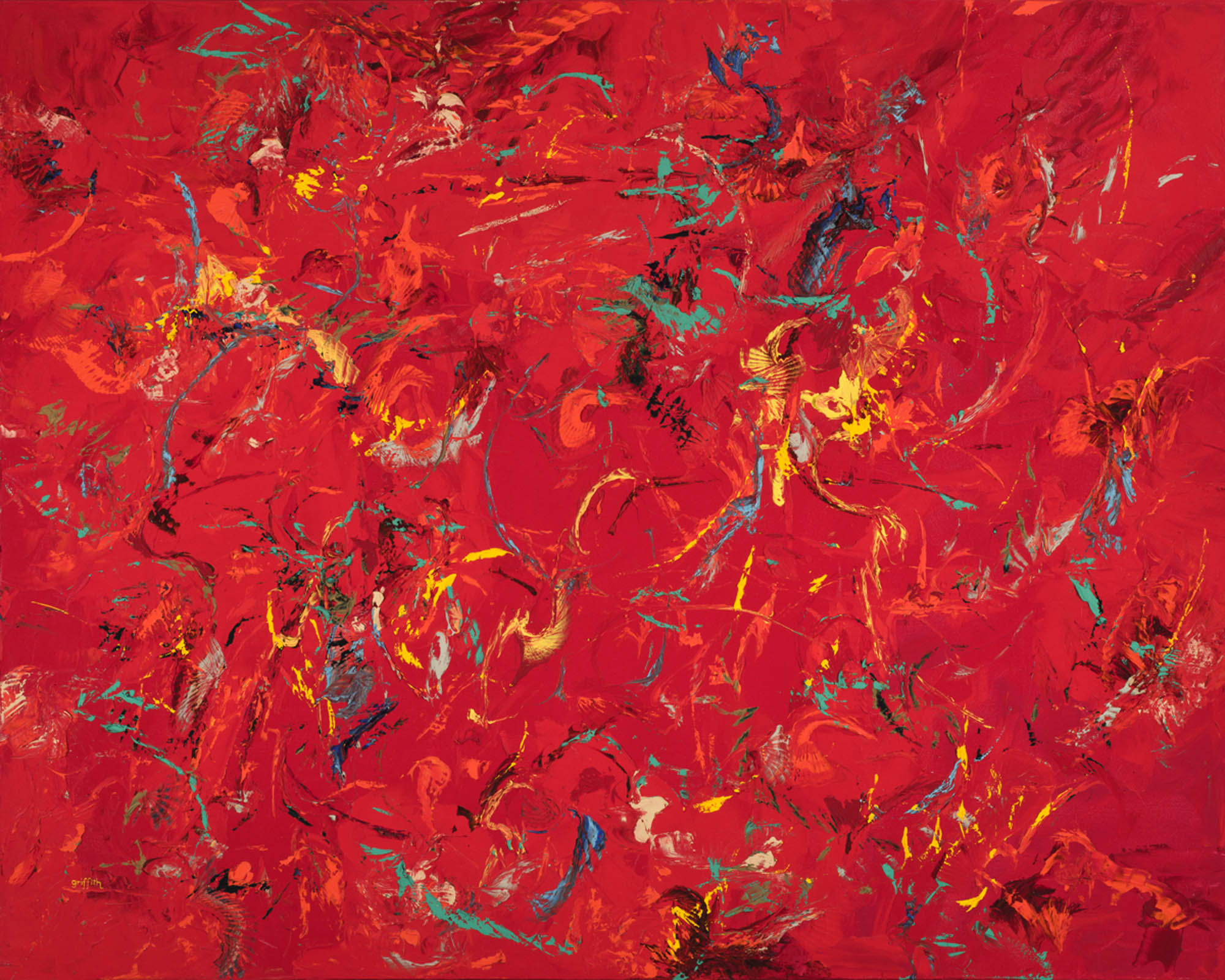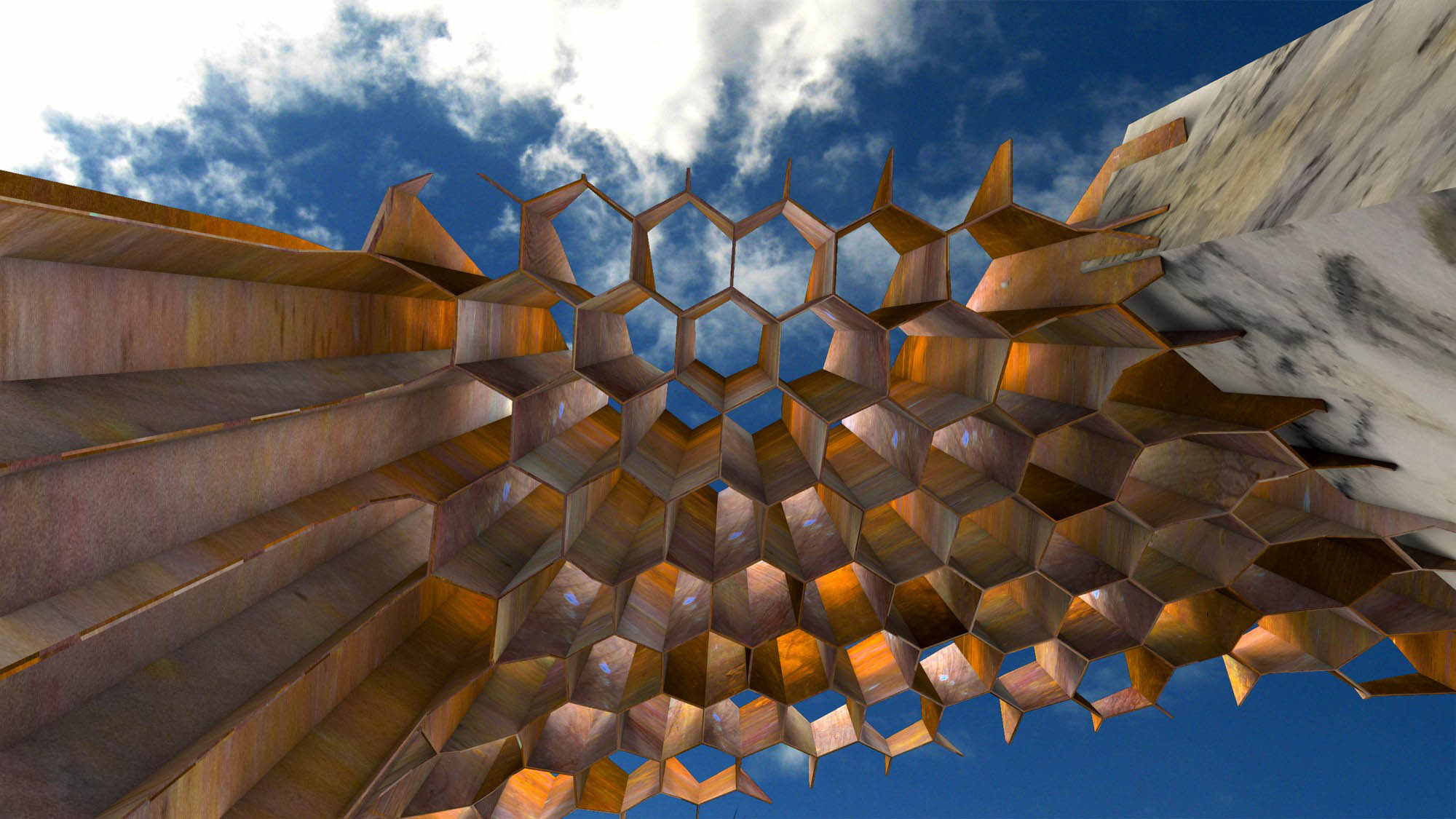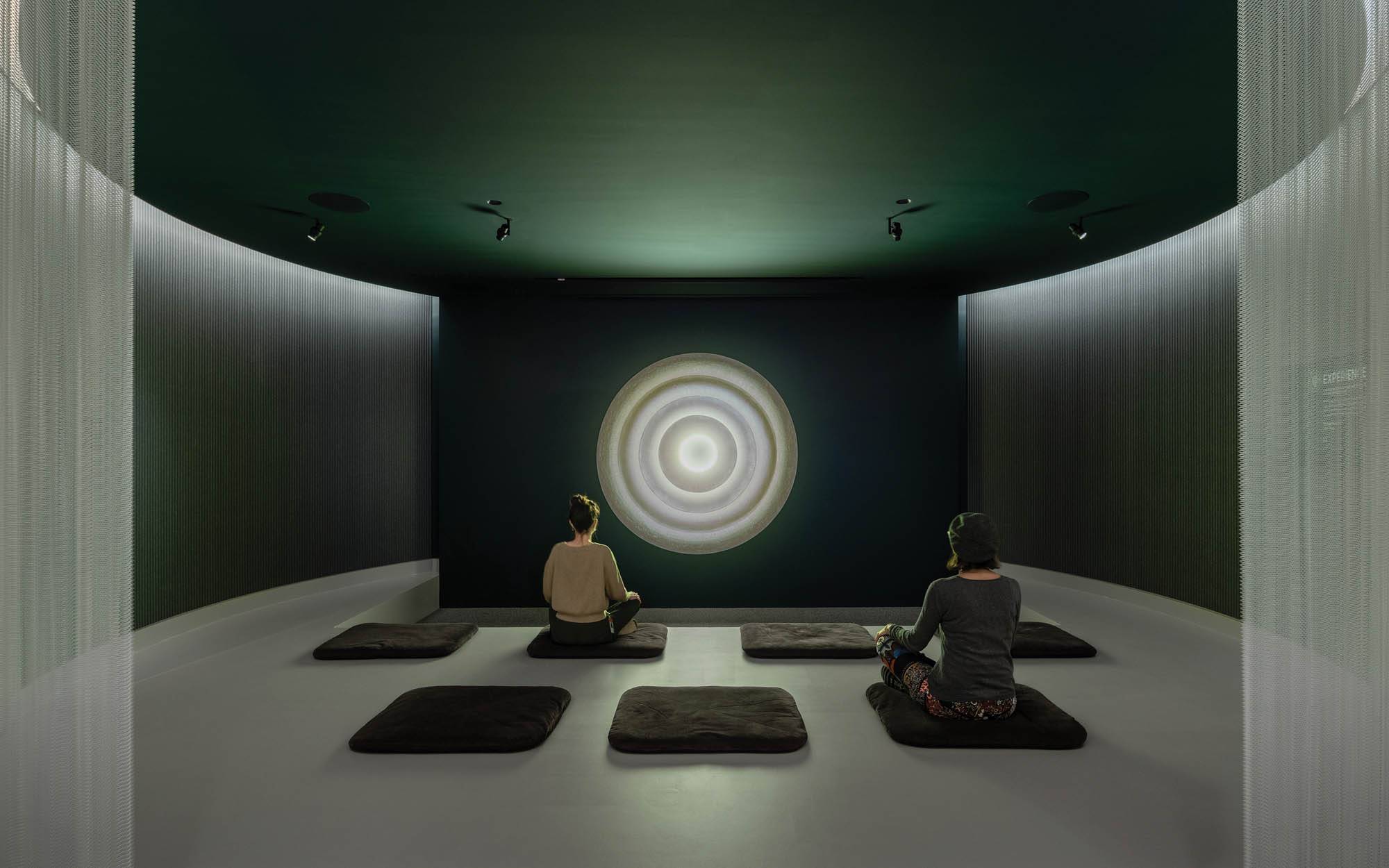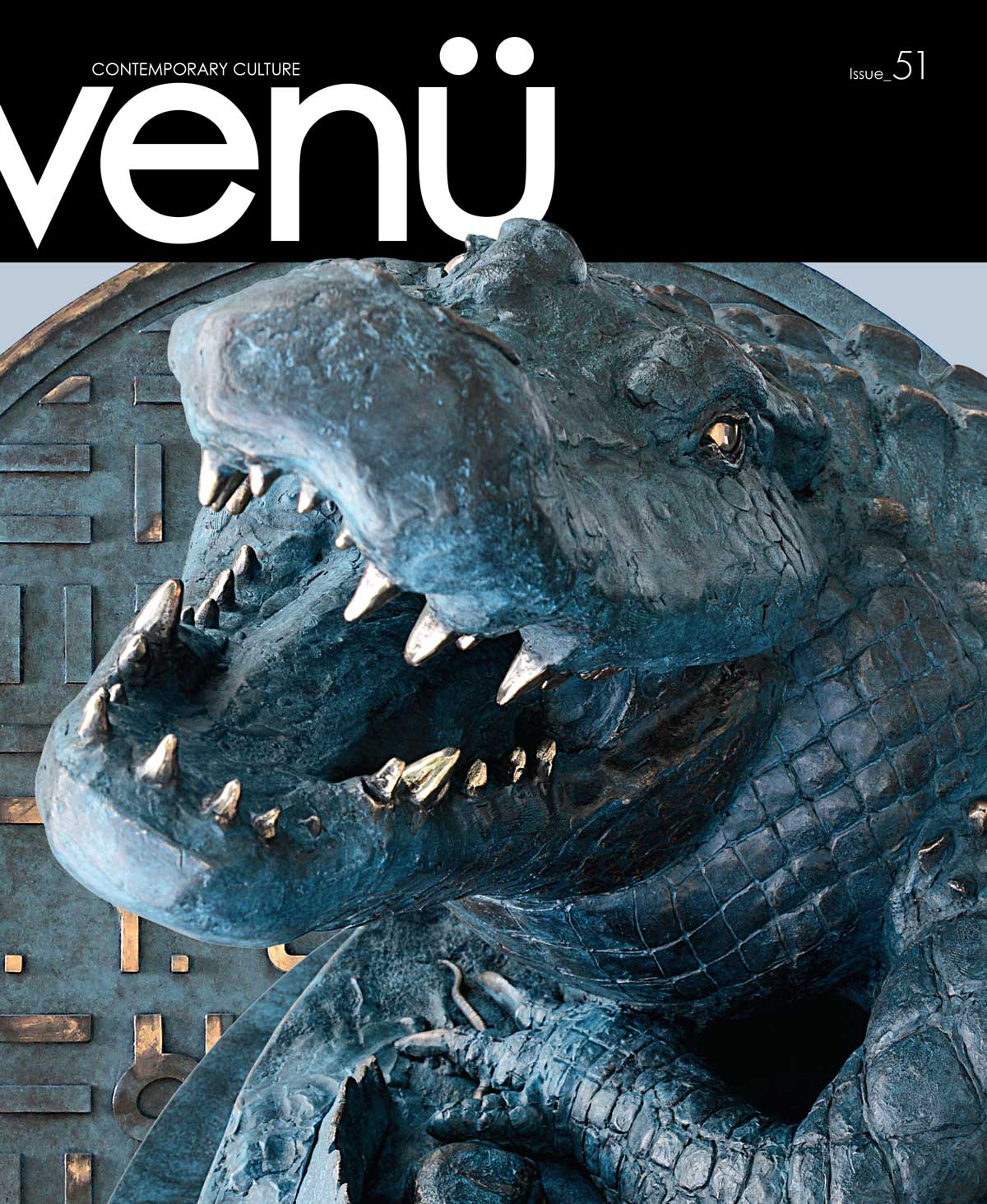As humans, we’re part of the connection between the built and natural world. We tend to ignore this interrelation primarily due to how quickly we operate and disembody ourselves from something that’s not within our reach of understanding or attainable to the eye. Public Space artist Norie Sato and CGI Artist and Architect Madi Chanyshev exchange relatable design ideologies about the behavioral contexts of form and their inseparable relationship amidst humanity, structure, and the ecosphere.
VENÜ: What about the shape of triangles transcends a point of connection for you? Can humans cohabitate well in triangular structures?
Norie Sato: Triangles are ubiquitous – they hold an endearing meaning for me. Triangle Studios was an influential group of artists with whom I used to share a space. I use triangles in several ways in my work as they help create appropriate and inappropriate shapes. Triangular shapes are often found in 3D renderings as they allow us to imagine things when they don’t exist in reality and help us get into a space.
Madi Chanyshev: I often use sharp angles and triangle shapes in architecture – as architecture is an expression of emotion, and a triangle expresses character with a desire for the future.
NS: Triangles have a duality – they can be constraining, yet they have a stable shape. The corners of a triangle are disproportionate to our bodies. Triangular structures house forms and reflect mountain peaks.
MC: I’m interested in knowing what inspires you and how you visualize your ideas into reality. Please elaborate.
NS: Each project has an entirely different context, but the mainstay within the realm of the entire scope of my work is that I try to elevate the interaction between humans, nature, and technology in some way. The balance between the three variables in each project is not always the same: at times, it’s more subtle, and at others, more profound. The connective aspect is essential to me. E.g., “In the Fold,” the Garry oak tree directly behind the artwork becomes very prominent with images and patterns. The human aspect is not visible except in the materials and how the art components are put together. However, in “Meet Me at The Triangles,” the artwork focuses on human life in Wheaton. MD, where the installation is permanently located. – A lot less on the natural.
VENÜ: How do you intertwine the articulation points between humanity and Nature so seamlessly? What is the importance of that in your work?
MC: I believe any idea that’s arisen among people is borrowed from Nature. We are obliged to adjust the architecture to the landscape, the landscaping palette, and the shape of the environment. It is in this combination that Nature + architecture will be a masterpiece.
NS: Nature has the ability to break through what we do as human beings; it’s determined to live even in the most hostile environments. Nature commands us to find unity out of discord; even when it’s most uncontrollable, there’s a natural selection and balance in the process. I learn from Nature and implement this in my work, reflecting that our ecosystem has longevity, no matter the consequences, it endures, and we find strength in its beauty. I’m also inspired and in awe by seagulls and the shapes of their wings. Although they tend to be nuisances, they are intelligent and resourceful creatures.
NS: You tend to put a lot of elements of surprise in your work. You can see it in “THE LOOP” cocktail bar and “Metro Station.” Is that purposely done?
MC: In general, I am madly in love with the combination of contrasting shapes, colors, lighting, and design. In the “Metro Station” project, you can immediately see a mix of cold and heavy concrete with light, airy, bright, and warm acrylic balls. And in the scheme of the bar, we see the same technique of combining a concrete finish with warm lighting and a neon loop throughout the ceiling. As a result, people feel this contrast and can feel different emotions.
VENÜ: As an installation artist, your work is demonstrated in digital and physical planes. How does one attain a sense of tactility in each of these environments?
NS: The difference between the analog and digital worlds is how we interpret them. Analog relates signals or information by a continuous variable, whereas on the contrast, digital relates information through a brain-computer interface. We certainly can view something perceptible by touch and be deceived. On the other hand, we can translate something magnified that isn’t tangible at all through the lens of a James Webb Telescope, and it’s authentically felt. There’s an ambiguity in my approach and duality between these emerging worlds. Tactility is something that is thought through the gesture of materials as well as emotions. My work is meant to provoke a feeling. I take a broader idealistic approach in my projects that I want the partaker to arise at what their own sense of reality is. I pay close attention to these details.
VENÜ: Is typography an essential element for you in your architectural statements?
MC: Typography is a critical component of capturing beauty for me if I put it correctly. So yes, this is important to me.
NS: The way you create the interaction between railings and walls is an interesting geometry. Are they curved, flat, or straight?
MC: The railing elements are not only a functional component but also a design element. I enjoy working with straight forms and find straight railings are more attractive and appealing to the eye.
MC: What comes out of your subconscious when you design? Is there a strong narrative you want to tell that gets embedded in your story?
NS: Working in the public space comes with constraints, especially in an exterior environment. Longevity and durability are pivotal components of the structural elements. “The magic begins with the treatment of materials as they help manifest concept, and it unveils into a story.” Some of the things I think about is how people will interact with the textural component. There’s a palette of materials I enjoy working with to create that human touch.- Fine-grained mosaic for its permanence and softness, wood and glass for fragility, and steels, aluminum, and bronzes for their strength and to avoid rust. I see materials in an unconventional way in which vicissitude changes our perception, and that movement creates emotional value for the co-participant – creating hidden subtleties and whispering secrets.
NS: Given the opportunity to rethink or reimagine what the new cities of the future would look like, what would you do differently in the built environment? What would we encounter when we inhabit them?
MC: Cities of the future are a prevalent issue in the society of architects. The main problem that threatens us is the lack of land in the future and, consequently, the lack of living space for people. Now, cities are streaming horizontally. I think it is worth paying attention that we also have a vertical space; this is the sky and the depths of the earth. ☐
www.chanyshevarchitects.com | www.noriesato.com
All images courtesy of Chanyshev Architects and Norie Sato.





Leave a Reply